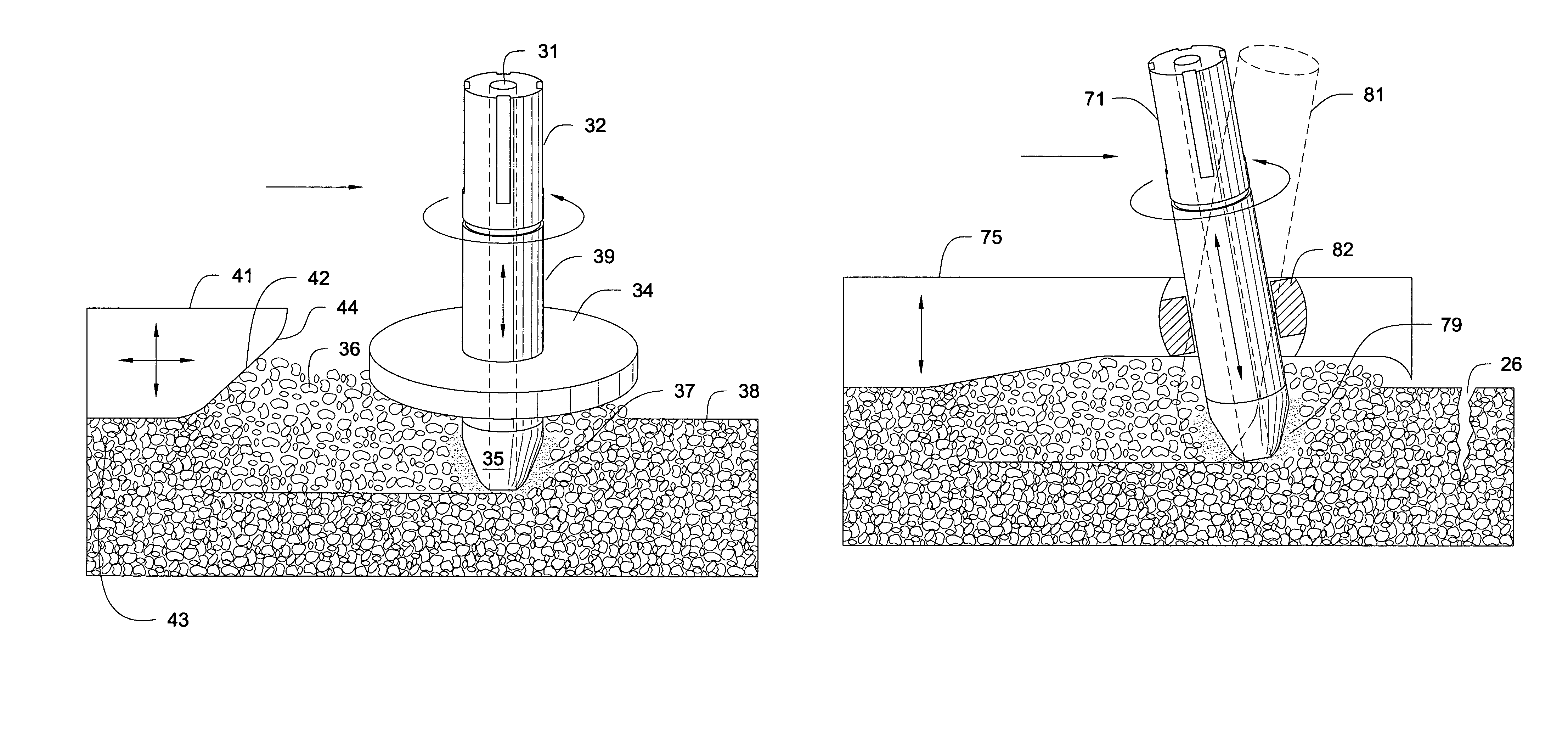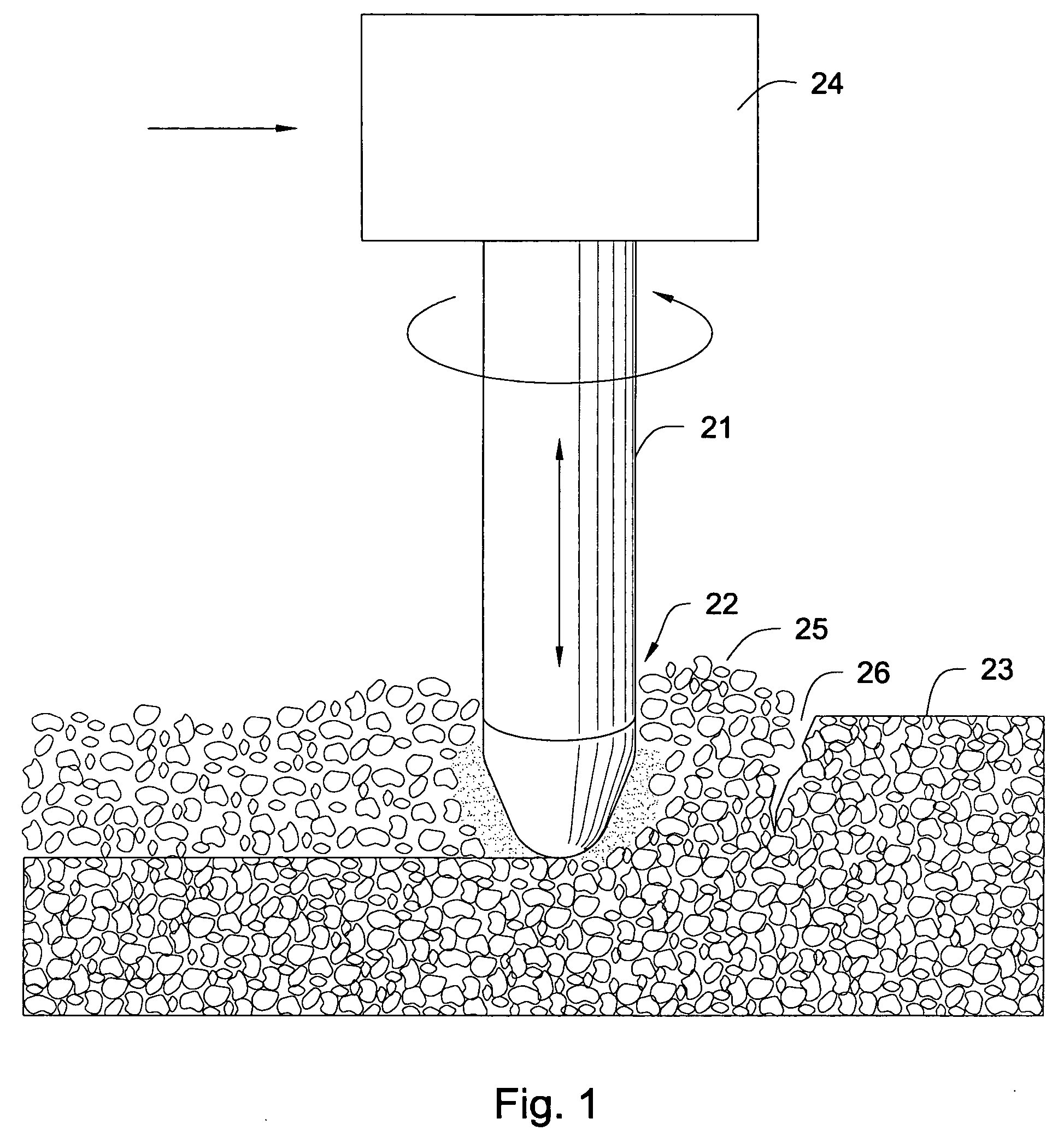Apparatus and method for working asphalt pavement
a technology of asphalt pavement and apparatus, applied in the direction of cutting machines, roads, roads, etc., can solve the problems of asphalt pavement contracting and cracking, hard surface softening, expansion, plastically deformation,
- Summary
- Abstract
- Description
- Claims
- Application Information
AI Technical Summary
Benefits of technology
Problems solved by technology
Method used
Image
Examples
Embodiment Construction
[0044]The invention will be further described in relation to the following discussion and figures.
[0045]This invention comprises a rotary tool for working asphalt pavement attached to a means for providing high-speed rotation and thrust. The rotary tool comprises a first end comprising a working surface and second end adapted for connection to the means for providing high-speed rotation and thrust. In operation, the rotary tool is rotated at high speed and applied to a selection of asphalt pavement. The working surface of the tool frictionally heats the asphalt to a temperature, say to about between 200° to 400° F., sufficient to soften the asphalt binder. The rotary action of the tool then disintegrates the asphalt composite materials and prepares them for reconsolidation into a renewed surface, thereby working the asphalt. In this manner cracks and fissures in the asphalt may be healed. The asphalt pavement surface may be pre-heated before being decomposed by the rotary tool.
[0046...
PUM
 Login to View More
Login to View More Abstract
Description
Claims
Application Information
 Login to View More
Login to View More - R&D
- Intellectual Property
- Life Sciences
- Materials
- Tech Scout
- Unparalleled Data Quality
- Higher Quality Content
- 60% Fewer Hallucinations
Browse by: Latest US Patents, China's latest patents, Technical Efficacy Thesaurus, Application Domain, Technology Topic, Popular Technical Reports.
© 2025 PatSnap. All rights reserved.Legal|Privacy policy|Modern Slavery Act Transparency Statement|Sitemap|About US| Contact US: help@patsnap.com



